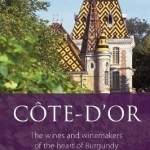The Cote d'Or: The Wines and Winemakers of the Heart of Burgundy: 2017
BookThis item doesn’t have any media yet
2017 | Food & Drink
Cote-d'Or may be small in size but its influence is huge and its reputation alone can strike terror into the heart of even the most seasoned wine professionals. Cote-d'Or is located in the very heart of Burgundy and stretches for a narrow 35-mile band. It's on this terroir that some of the world's best known wines are produced. There are two main sections. Cote de Nuits, named after the village of Nuits-Saint-Georges, is a mere one mile by 12 miles but it's home to 24 Grand Cru vineyards and some of the world's most expensive vineyard real estate. This is the northernmost region, starting just south of Dijon and running to Courgoloin, a few kilometres south of Nuits-Saint-Georges and it grows mainly Pinot Noir and other red grapes. It is responsible for some of the great names of French wine, Gevrey-Chambertin, Nuits-Saint-Georges and Beaune itself. The second part, the southerly Cote de Beaune, is well-known for its whites but actually grows both Chardonnay and red grapes. One of the most famous villages in the Cote de Beaune is Pommard, known for its heavy, full-bodied reds. It's an intimidating terroir but Raymond Blake's companionable Cote-d'Or demystifies it.
There is hardly another wine region where knowledge of the back-story is so critical to understanding the wine, for it is impossible to understand burgundy without reference to the place it comes from and the people who make it. In Cote-d'Or Blake transports the reader to the heart of Burgundy, telling the whole story and painting a complete picture of life there: the history, the culture, the people, the place, the geography and the climate.
Related Items:
| Published by | Infinite Ideas Limited |
| Edition | Unknown |
| ISBN | 9781908984937 |
| Language | N/A |
Images And Data Courtesy Of: Infinite Ideas Limited.
This content (including text, images, videos and other media) is published and used in accordance
with Fair Use.
